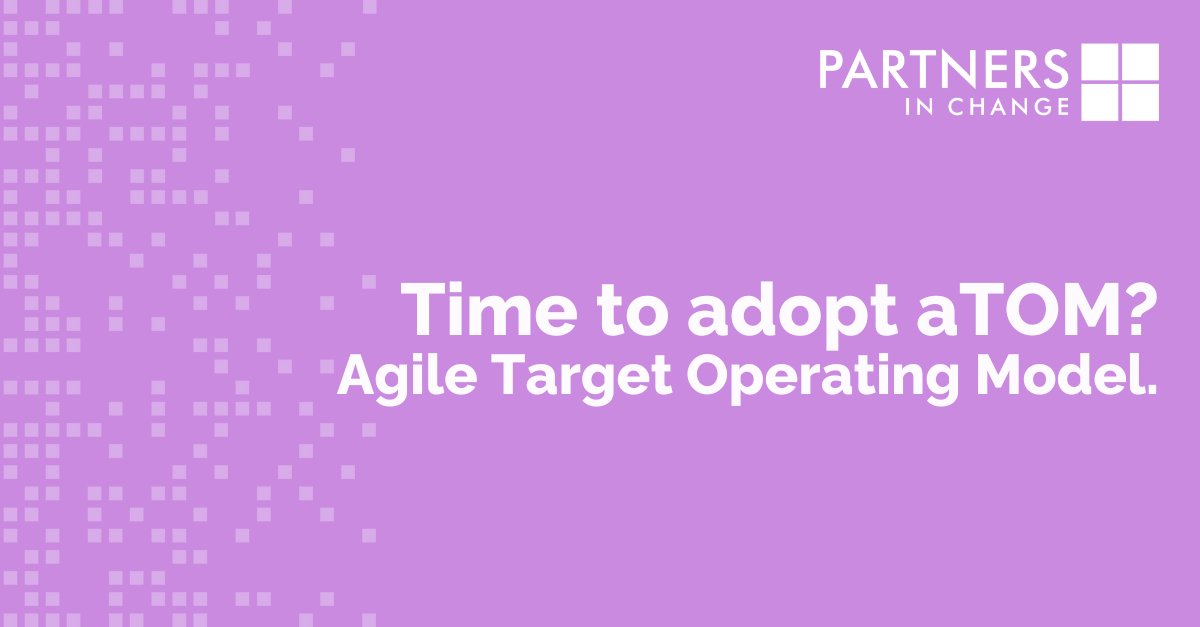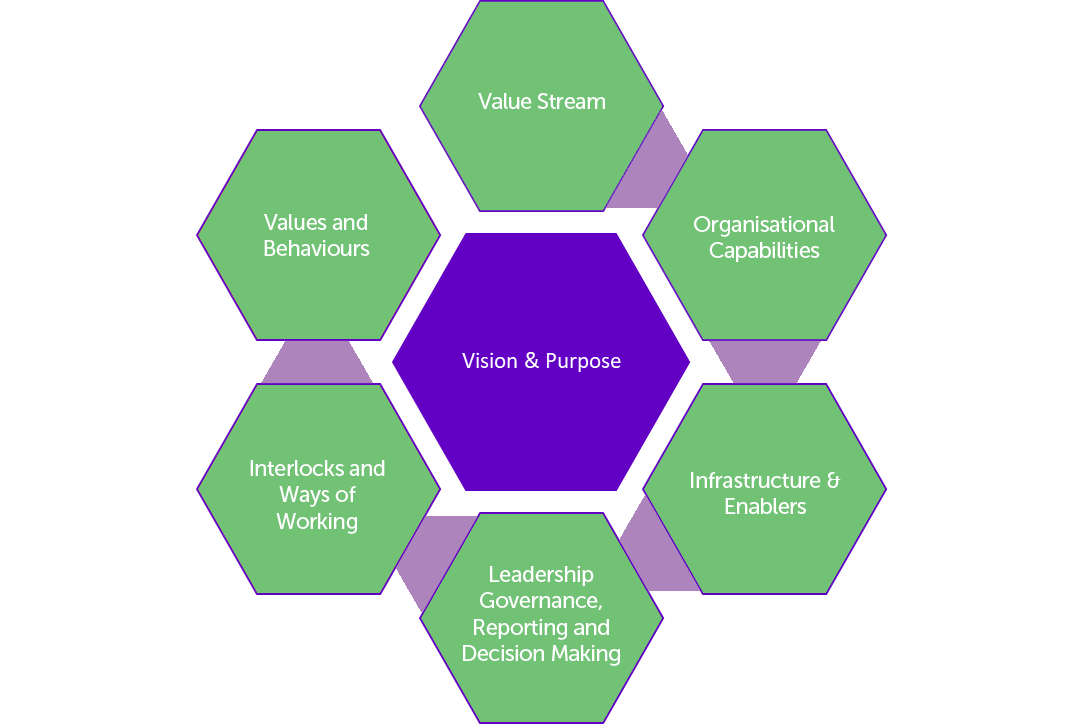Time to adopt aTOM? Agile Target Operating Model – Bal Hegedus-Pickvance
By Craig Ryder — August 7, 2024

aTOM – a new approach to building a better operating model.
An effective operating model is a vital component in the smooth and profitable running of any organisation. All organisations have them (whether informal or fully documented) but, over time, they are inclined to slowly drift ‘off track’, reducing efficiency and negatively impacting the day to day experience for both customers and colleagues.
All organisations have them and, where it is not consciously designed, they are inclined to slowly drift ‘off track’, reducing efficiency and negatively impacting how you drive towards your vision, purpose and value for your customers.
There are many reasons for this ‘drift’ but, most often, we see an inclination for the organisation to operate in a way that is influenced by organic changes and history rather than reflecting the organisational future vision and how this meets customer needs both now and in the foreseeable future.
As technological change accelerates (impacting both what an organisation could do and what customers expect) operating models must be constantly challenged and potentially redesigned far more often than was previously the case.
For too many, this is a painful, expensive and lengthy process which often sits in the ‘to do, but too hard’ stack.
In the past, fixing the operating model has meant big-ticket consultants working behind locked doors for weeks on end utilising something resembling a rigid waterfall method. For most businesses in 2024, we think there is a better way.
By blending agile principles with our operating model framework (below), we strongly believe organisations can design and implement in a quicker, more inclusive and more successful manner.

(You can read more about this TOM framework by clicking this link:
Target Operating Model – Design & Implementation – Partners In Change (picconsulting.co.uk)
At the heart of this approach are the following elements. By undertaking the elements set out below, organisations can design an operating model in an open and collaborative environment, accelerating change and creating buy-in across the process.
Diagnose and understand cross organisational issues. This remains a key step, reducing the inclination in pressurised businesses to rush towards the solution without knowing where you are and what really matters.
Then, create top-level iterations of the Operating Model. Don’t worry about detail at this stage, instead building a high level view as a starting point for input.
Implement changes to start the transformation via ‘Epics’ (an epic is simply the small group of larger activities that together deliver the overall challenge.
For each ‘epic’, design the Operating Model to the level needed to start the transformation
Iterate frequently as you implement and learn. Welcome and embrace ideas and reflections from those on the inside of the change.
Leave detail such as job specifications and detailed process until the very end.
Focus on the broad changes needed, always enabling and trusting the teams involved and affected by the change.
Circle back to the top-level iteration of the design to knit together the different elements at each level.
Experience tells us this combination of activities and principles is highly positive, with the following benefits likely to be felt:
- Lower cost – less time spent on expensive consultants hidden in a room, creating the ‘perfect design’
- Quicker to get to through the ‘difficult’ journey of consultation process
- Changes are implemented faster and therefore benefits are realised earlier
- Inherent engagement and co-creation means improved commitment to change as multiple stakeholders feel part of the process
- Far easier to shape and evolve the solution as a result of both buy-in and top down approach.
We hope this article has given you food for thought. If you’d like to find out more you can watch an edited version of my webinar on the subject by clicking on the link below and find a copy of the slides below.
if you’d like a conversation about how we might help, don’t hesitate to get in touch through the ‘Contact Us’ section at www.picconsulting.co.uk or by calling us on 0161-913-2213.



Recent Posts